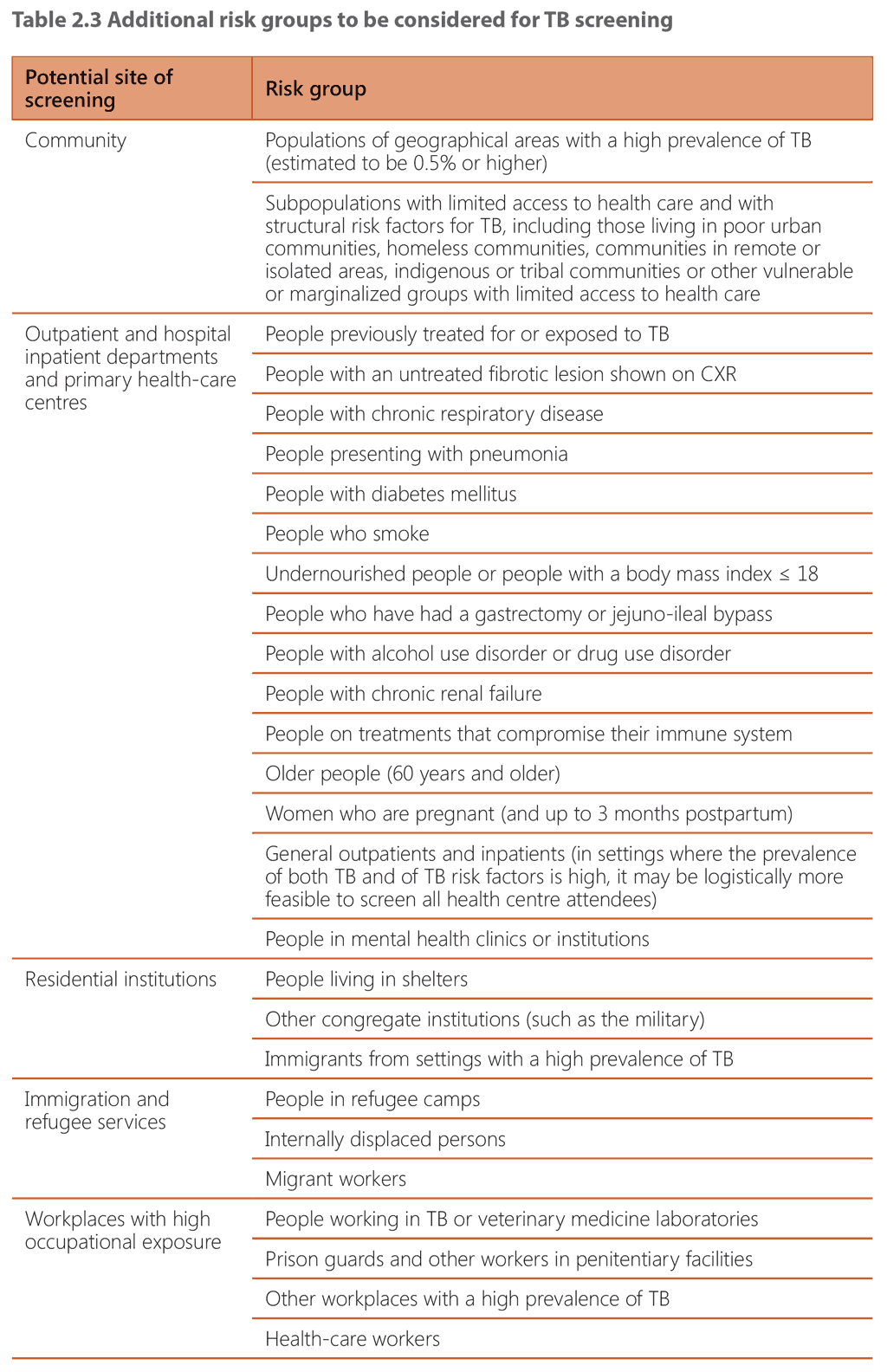Book traversal links for 2.4 Identifying and prioritizing risk groups
Risk groups include groups at high risk of exposure to TB or of progression to TB disease or who have limited access to TB services. The following risk groups should always be systematically screened for TB:
- household and close contacts of people with TB,
- people living with HIV
- people exposed to silica (mainly some miners) and
- people in prisons and penitentiary institutions.
For these four risk groups, the focus should be on how to screen and on the quality of screening, not if to screen. The assessment should include the size and distribution of the group, the TB burden in the group, past and current screening experience and any remaining considerations and challenges to be addressed to optimize screening.
Other risk groups (Table 2.3) should be prioritized for screening according to local epidemiology and the goals and objectives of screening. Systematic screening for TB disease in children is challenging, as both the screening and the diagnostic tools are less accurate in children than in adults; therefore, there is a higher risk that large number of diagnostic tests will be required, with large numbers of falsepositive cases that are unnecessarily started on TB treatment. In principle, only children who are close contacts of a person with TB and children living with HIV should be systematically screened for TB. Other children, including malnourished and internally displaced children, are to be assessed according to diagnostic algorithms for paediatric TB as part of standard clinical management. As TB may occur in contacts exposed 2 years or more previously, contact investigation may have to be extended in time beyond freshly diagnosed index TB patients.

Screening should be designed to reach the people at greatest risk of TB, including high-risk groups and communities with a high prevalence of TB; indiscriminate mass screening regardless of risk should be avoided. Risk groups should be prioritized for screening after assessment of the potential benefits and harm in relation to costs. Screening offers benefits for the individual (see 2.4.1) but may also be a risk and cause harm (see 2.4.2). The benefits of screening may also be seen at population level, as a reduction in prevalence and transmission (see 2.4.3). The balance between benefits and costs is further determined by the total potential yield (see 2.4.4), the NNS to detect a true case of TB (see 2.4.5), the feasibility of the initiative and the acceptability of screening to the group (see 2.2.2).
Prioritization may also depend on which stakeholder is responsible for screening. For example, a national TB programme under the auspices of a ministry of health may have other mandates, priorities and resources than health services that are managed by a ministry of justice, ministry of labour, an immigration authority, a nongovernmental organization, a private health-care provider or an employer.
A tool has been developed to assist in prioritizing risk groups for screening, which provides estimates of the potential yield of true- and false-positive TB results and the cost of screening, according to the risk group(s) targeted and the screening algorithm(s) used (see 3.3).
 Feedback
Feedback